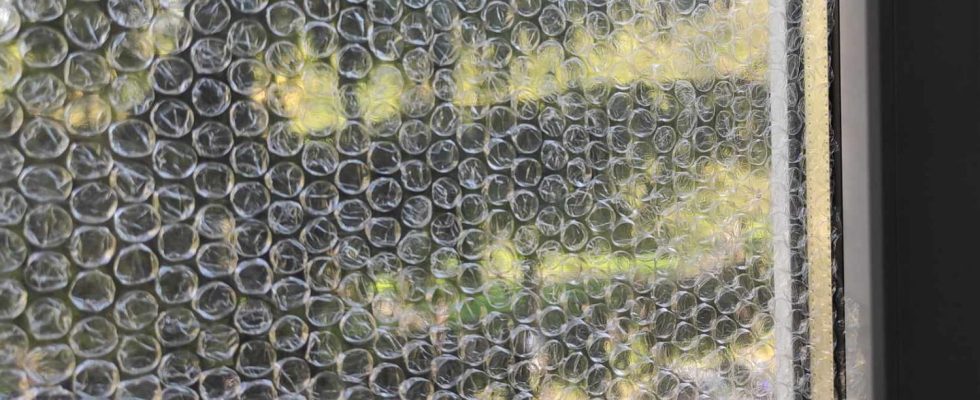Bubble wrap can help you keep the heat inside your home and save a lot of money on heating. And it’s very simple to set up.
While temperatures are still cold at night, radiators continue to consume and our bills continue to rise. There is no question of turning off the heating yet. Fortunately, there is a really effective and very easy to implement tip to reduce these costs.
There are many tips for saving on heating while maintaining an optimal temperature in your home. If we know that we need to close the shutters at night, install thick curtains, declutter the radiators, etc., there is an unexpected technique. Against all odds, you don’t need sophisticated equipment. A simple bubble wrap will do the trick. How to use it ? The bubble wrap trick may seem unusual, but it’s terribly effective. With it, you can easily and inexpensively seal your windows, preventing heat from escaping. What will you need?
- Bubble wrap (recovered from a delivery box for example),
- Scissors,
- A bottle with a spray bottle filled with hot water.
Start by cutting the bubble wrap into pieces that will completely cover the windows of the chosen room. Then carefully spray the water on the side with the bubbles and on the glass. All you have to do is press the film firmly against the glass. To ensure optimal adhesion, it is recommended to clean the windows beforehand. If installed correctly, the film should last through the winter. If you have any doubts, you can also secure it with tape.
Sticking bubble wrap on a window creates an extra layer of insulation. The air bubbles act as thermal insulation pockets, reducing heat exchange between the interior and exterior. This minimizes heat loss in winter, keeping the interior warmer. Less heat escapes, reducing the need to constantly heat the room. Result: a reduction in energy consumption for heating and, consequently, savings on the energy bill. This simple and economical method improves the thermal efficiency of uninsulated windows.
This tip is most effective on single glazing which is still found in many old houses or apartments from the 80s/90s. By removing the film in the spring, traces may appear, but you can easily clean them. Don’t forget to ventilate your rooms regularly, even in winter.
